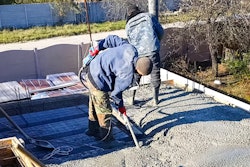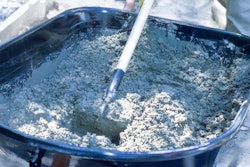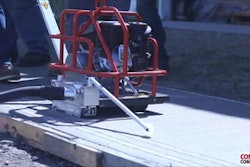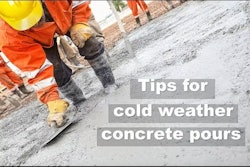- Protect concrete at early ages to prevent the batch water from freezing. If the batch water freezes, up to 50 percent of the concrete’s strength can be lost. In order to avoid early age frost damage, the concrete must obtain at least 500 psi before the first freeze. Most winter mixtures should obtain this strength within 12 to 24 hours. Therefore, protect freshly placed concrete from freezing for the first 24 to 48 hours, especially surfaces and corners.
- Continue protecting new concrete to ensure an adequate rate of strength gain. Use field-cured test cylinders or the maturity method to estimate in-place concrete strengths. Use estimated in-place strengths to determine when it is safe to remove formwork, shoring and place the structure into service. In-place temperature-time history can also help evaluate the effectiveness of the cold weather protection.
- When removing cold weather protection, do not to thermally shock the concrete by exposing warm, moist concrete to freezing temperatures. Exposing warm concrete to freezing temperatures and wind can cause surface thermal shrinkage and cracking. Consider removing curing blankets during the day when temperatures are warmer and replace at night so the concrete can gradually cool. After the concrete cools, protection can be completely removed.
Tips for Cold Weather Concreting
A few quick tips for a successful cold weather concrete pour, from avoiding frost damage to removing cold weather protection.
Latest in Concrete
Simpson Strong-Tie Launches All-in-One Concrete Crack Injection Kit
December 23, 2025
Building Beyond the Flame: Concrete Homes a Wildfire-Ready Solution
December 15, 2025
Decarbonizing Concrete: What the Contractor Can Do
December 12, 2025



















